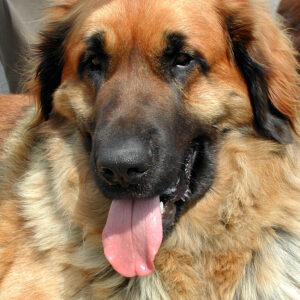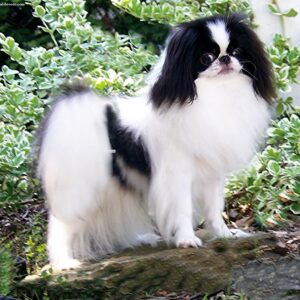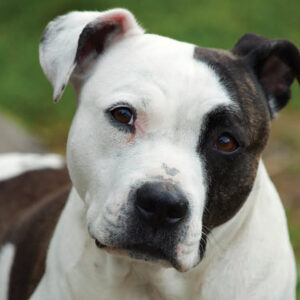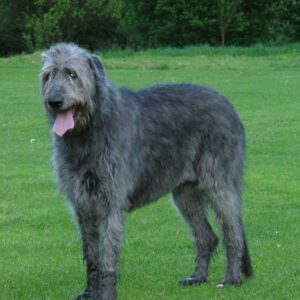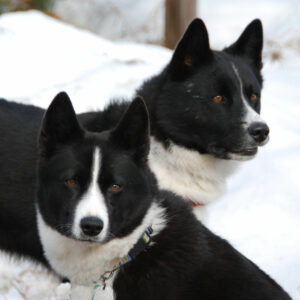Great Pyrenees, also known as Pyrenean Mountain Dogs, are beautiful, majestic dogs that have captured the hearts of many dog lovers. These dogs have a rich history and interesting characteristics that make them stand out from other breeds. In this post, we will explore the history of the Great Pyrenees, their location of origin, characteristics, choosing the best foods, training, and taking care. Additionally, we will provide answers to some of the frequently asked questions about this breed and conclude with some final thoughts.
History
The Great Pyrenees breed dates back to ancient times, with the breed originating from the Pyrenees Mountains in southwestern Europe. The breed was originally used by peasants to protect their livestock from predators such as wolves and bears. As a result, the Great Pyrenees became known for their exceptional guarding abilities.
During the seventeenth century, the breed came to the attention of French nobles who began breeding them as companions and guard dogs. Later, in the nineteenth century, they were brought to the United States and became a popular breed among American farmers and ranchers. Today, the Great Pyrenees are still used as guard dogs and make great family pets.
The Great Pyrenees played a pivotal role in their history, and their guarding ability remains unmatched to this day. Their noble history and noble character make them an excellent choice for anyone looking for a loyal, loving dog that is also a great protector.
Location of Origins
The Great Pyrenees is believed to have originated from the Pyrenees Mountains in southwestern Europe, specifically in the regions of Spain and France. The breed was initially used by peasants in these regions to protect their flocks of sheep from predators.
The Great Pyrenees evolved over the centuries to become outstanding guardians, owing to their natural distrust of strangers and their territorial nature. They also have exceptionally sharp senses, which allows them to see, hear, and smell dangers from afar. Today, they continue to be bred in these regions, albeit for different reasons – this time as companion animals and show dogs.
If you are interested in owning a Great Pyrenees, you should expect them to have strong territorial instincts and to require ample space to roam around. They need a fenced yard where they can run and play freely. The Pyrenees prefer spacious, open environments, so they may not be suitable for apartment living.
Characteristics
The Great Pyrenees is a large breed of dog, weighing between 85 and 130 pounds and standing 27 to 32 inches tall at the shoulder. They have stunning white coats with short, dense fur, giving them an elegant appearance that is sure to catch the eye.
One of the most notable characteristics of the Great Pyrenees is their intelligence. They are an intelligent breed that is quick to learn, making them easy to train. They are also loyal and protective, making them wonderful companions for families with children.
Pyrenees have a calm and patient temperament, making them good at staying calm under pressure. Their strong guarding instincts also make them excellent watchdogs, which means they will be quick to react to any potential threats to their family.
One thing to note is that the Great Pyrenees sheds quite a bit, and grooming is essential to maintain their gorgeous coat. They will also need regular exercise to stay healthy, both physically and mentally.
Choosing the Best Foods
As with all breeds of dogs, the Great Pyrenees requires a healthy, balanced diet to support their overall health and wellbeing. It is essential to choose high-quality dog food that contains all the essential vitamins and nutrients that your Great Pyrenees requires.
The Great Pyrenees is a large breed of dog and will require a considerable amount of food each day. However, overfeeding can lead to obesity, which can lead to health issues like diabetes and heart disease. It is essential to monitor your dog’s food intake and keep track of their weight to ensure they are healthy and not carrying excess weight.
As a general rule, the Great Pyrenees should be fed twice a day – once in the morning and again in the evening. Choose a high-quality, nutrient-rich kibble that is appropriate for your dog’s age, size, and activity level. Speak to your veterinarian if you are unsure about which brand or type of food to choose.
Training
The Great Pyrenees is an intelligent breed that is naturally responsive to training. They are quick learners and enjoy pleasing their owners, making them easy to train. However, they do have an independent streak, and training should always be done with patience, consistency, and positive reinforcement.
Pyrenees respond well to positive reinforcement, which involves rewarding your dog for good behavior rather than punishing them for bad behavior. Positive reinforcement can take many forms, such as treats, verbal praise, and affection, and is an effective way of training your dog to behave in a way that you find desirable.
It is essential to start training your Great Pyrenees early in life to encourage good behavior and prevent bad habits from forming. Consistency and routine will help with effective training. Additionally, socialization is crucial in training your pup from a young age to interact politely with other dogs, animals, and humans.
In some cases, training your Great Pyrenees may require the help of a professional dog trainer. If you’re worried about certain behavior issues or feel like you’re not making enough progress with your dog’s training, don’t hesitate to seek professional help.
Taking Care
The Great Pyrenees is a beautiful, majestic breed that requires proper care to maintain their overall health and wellbeing. Proper care encompasses everything from regular grooming to frequent exercise, medical check-ups to preventive measures against common health problems.
As previously mentioned, grooming is essential to keep the Great Pyrenees’ fur shiny and free of mattes. Brush their coat daily to ensure it is free of tangles and to minimize shedding. Bathing them regularly also helps keep their coat clean and shiny, although too much bathing can dry out their skin and fur.
Regular exercise is essential to maintain your Great Pyrenees’ health and wellbeing. They need plenty of opportunities to exercise and play, so make sure to set aside enough time each day for at least one walk or playtime session.
Finally, don’t forget to stay up to date with your pup’s medical check-ups and vaccines. Regular vet visits will ensure that any potential health problems are caught early and are treatable. Moreover, consult with your vet on what preventive measures against common problems must be taken.
FAQs
Q: Do Great Pyrenees bark a lot?
A: Yes, Great Pyrenees do bark a lot. They are naturally protective, which means they will bark to signal potential threats to their family and territory. Be sure to train your dog not to bark unnecessarily, as excessive barking can be a nuisance to neighbors and the dog owner.
Q: Are Great Pyrenees aggressive?
A: No, Great Pyrenees are not inherently aggressive. They are known to be gentle and docile, but also protective. The breed tends to be aloof around strangers, but they are not typically aggressive when appropriately socialized from an early age.
Q: Do Great Pyrenees need a lot of exercise?
A: Yes, Great Pyrenees require plenty of exercise to remain healthy and happy. They are a large breed of dog that needs ample space to move around, so make sure to provide them with plenty of opportunities for outdoor playtime and walks.
Conclusion
The Great Pyrenees is a beautiful, majestic breed that is sure to capture your heart if given the chance. With a fascinating history, intriguing characteristics, and easy-going nature, this breed is known for its loyalty, intelligence and makes an excellent companion and family pet.
If you’re considering adding a Great Pyrenees to your family, make sure to research carefully and provide them with a loving environment where they can thrive. By giving them proper care, training, and attention, you’ll find that the Great Pyrenees is a loyal and devoted companion that will bring joy to your life for many years to come.

